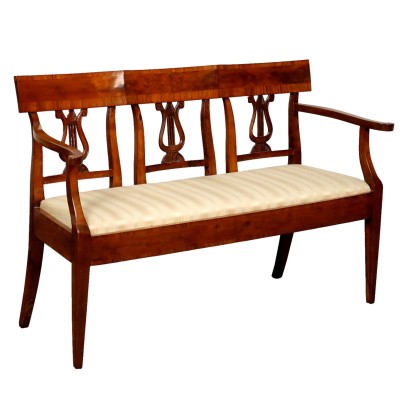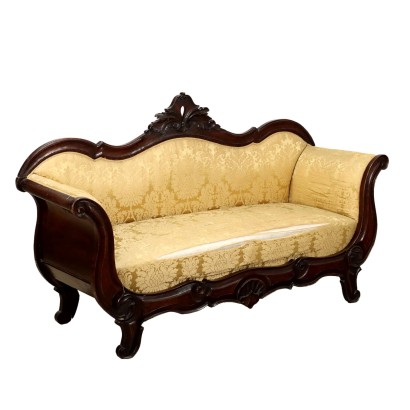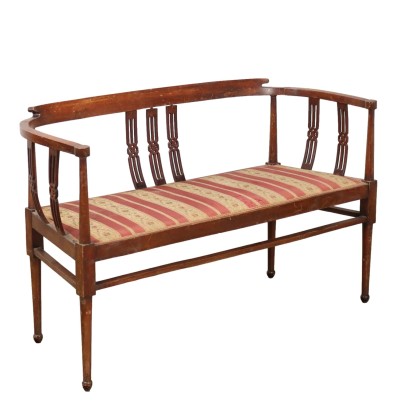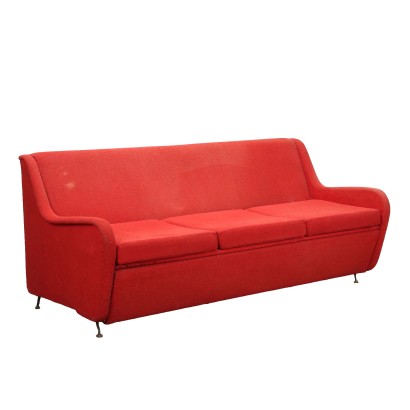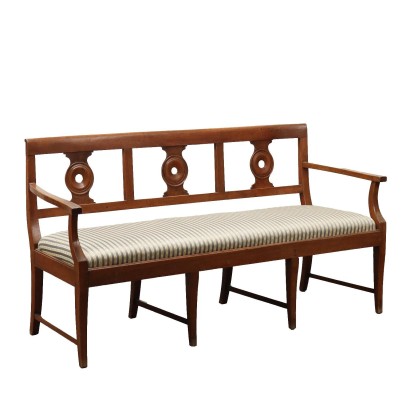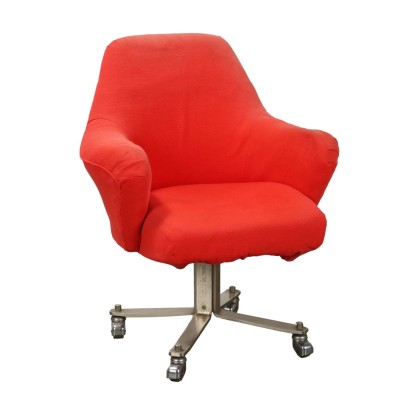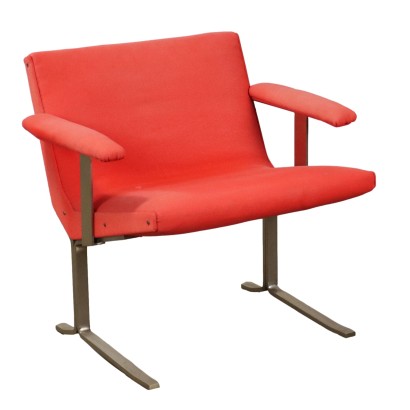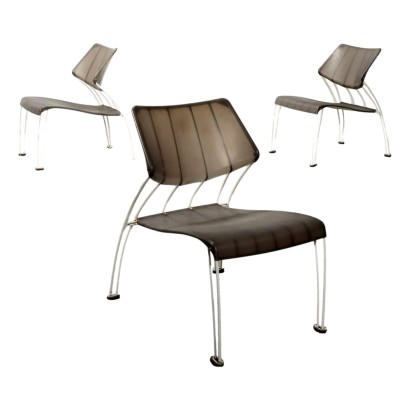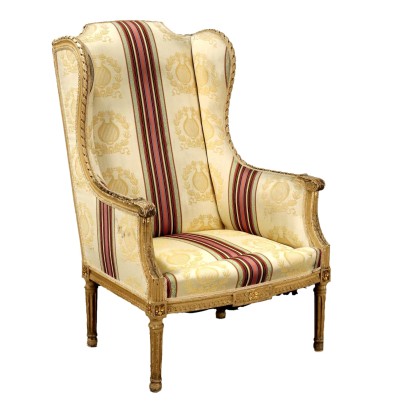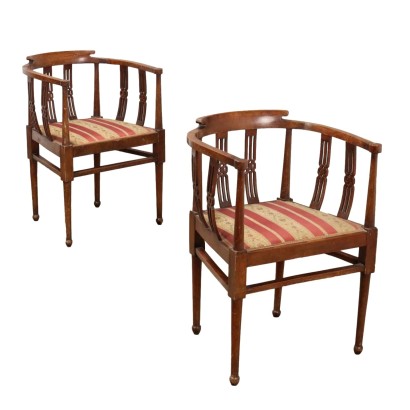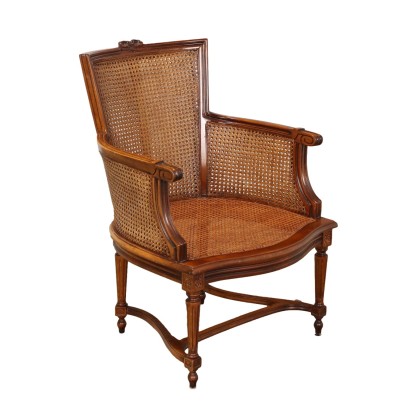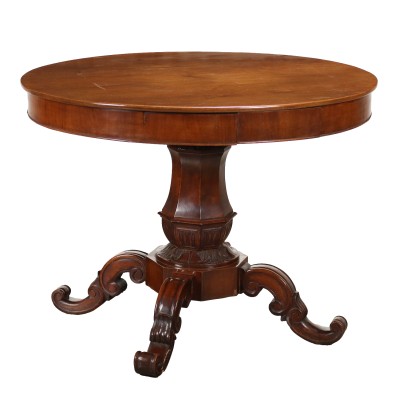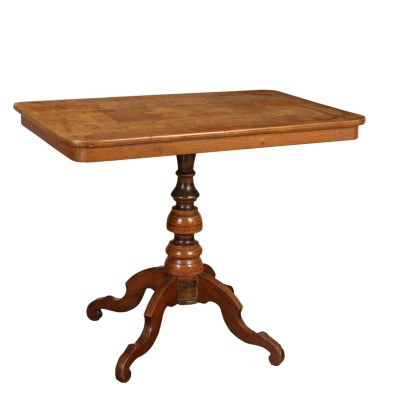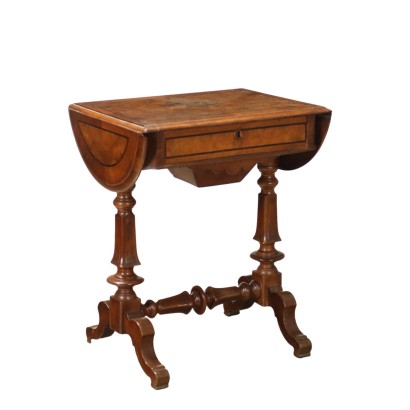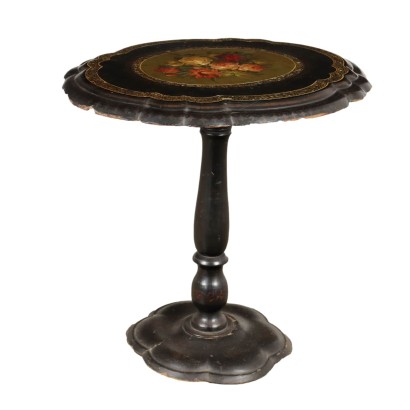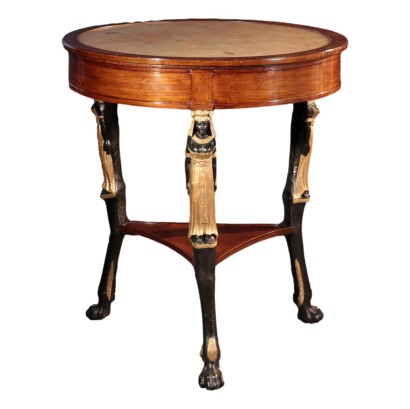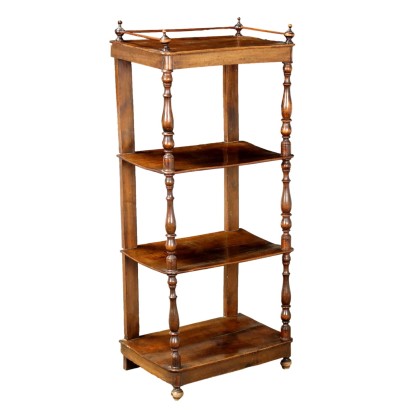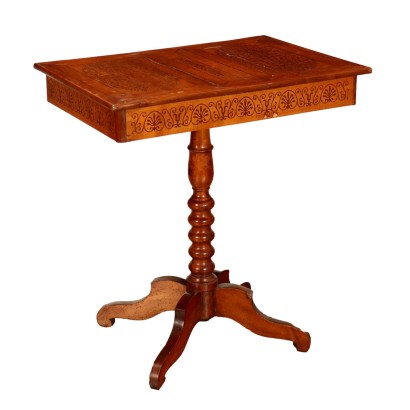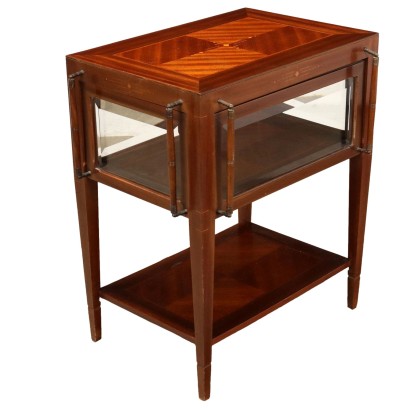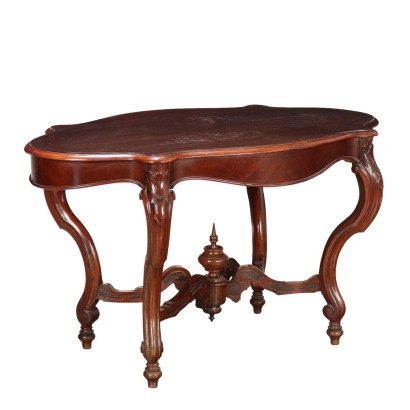Antique Empire Sofa Cherrywood Italy XIX Century - Italy, Early XIX Century
Features
Italy, Early XIX Century
Style: Empire (1804-1815)
Age: 19th Century / 1801 - 1900
Origin: Italy
Main essence: Cherry , Walnut , Striped Walnut
Material: Padded , Carved Wood
Description
Empire sofa in cherry wood with Rivatino walnut borders, Italy, early 19th century. Tripartite open backrest with carved lyre-shaped panels, wavy armrests ending in a curl, truncated pyramidal front legs, saber-shaped rear legs. Padded seat. It features restoration work.
Product Condition:
Product which due to age and wear requires restoration and re-polishing. We try to present the real state of the furniture as completely as possible with photos. If some details are not clear from the photos, what is stated in the description applies.
Dimensions (cm):
Height: 87
Width: 136,5
Depth: 49,5
Seat height: 48
Additional Information
Style: Empire (1804-1815)
Decorative style of the furniture that is affirmed under the Empire of Napoleon Bonaparte, that is, between 1799, the year of his election as consul, and 1815, the year of his definitive defeat.It has many elements of continuity with the previous Direttorio style, in the more general Neoclassical climate, which derived from the study of classical antiquity the forms and models to be inspired in the creation of furniture.
The peculiar feature of this style is a greater grandeur and courtesy of the furnishings, which had to convey the grandeur of the French nation to the world, hence the name Empire style.
The furniture is characterized by straight, majestic and massive lines, adorned with motifs dear to Napoleon such as bees, eagles, large Ns surrounded by laurel, and, after the Egyptian campaign, many elements taken from Egyptian art.
He prefers the flat bronze decorations, often gilded, to the refined carvings of previous years.
The typical essence of Empire furniture is mahogany.
Find out more with our insights:
Classic Monday: How society influences the taste in furnishings
Classic Monday: Empire, one style of furniture with political purposes
Classic Monday: in the Empire bed roots of culture
Classic Monday: the timeless charm of a toilet Empire
Age: 19th Century / 1801 - 1900
19th Century / 1801 - 1900Main essence:
Cherry
Obtained from prunus cerasus , a plant of oriental origin, it is a hard wood with a light and delicate color, with a reddish vein. Due to its diffusion and availability it was used in Europe in popular furniture. In cabinet making, in the seventeenth century, it was widely used in France and England for inlay work. In Italy it was very successful in Lucca. It was also very popular in the United States for the manufacture, from the late 1600s, of commonly used furniture.The dictionary of antiques: Eclecticism
Classic Monday: a sofa from the 1800s example of eclecticism
Walnut
Walnut wood comes from the plant whose botanical name is juglans regia , probably originally from the East but very common in Europe. Light or dark brown in color, it is a hard wood with a beautiful grain, widely used in antique furniture. It was the main essence in Italy throughout the Renaissance and later had a good diffusion in Europe, especially in England, until the advent of mahogany. It was used for solid wood furniture and sometimes carvings and inlays, its only big limitation is that it suffers a lot from woodworm. In France it was widely used more than anything else in the provinces. In the second half of the eighteenth century its use decreased significantly because mahogany and other exotic woods were preferred.Striped Walnut
With this name we mean a particular type of walnut, with a more exotic appearance, which is identified by the striped and linear grain, with a strong contrast between light and dark.Material:
Padded
Carved Wood
Other customers have searched:
Divano, duchesse brisée, dormeuse, ottomana, canapè, sofà..
Tutto quello che c'è da sapere sui divani lo trovi nel nostro blog e su FineArt:
Leggi di più
Un divano dell''800 esempio di eclettismo
Un divano neoclassico emiliano in cui un dettaglio è importante: Il nodo d'amore
Storia della dormeuse
Divano modulare Camaleonda di Mario Bellini
Divano "IX Triennale" Marco Zanuso per Arflex
Divano due posti 'Soriana', Afra & Tobia Scarpa per Cassina
Divano "D70", Osvaldo Borsani per Tecno
Quattro Divanetti lombardo-veneto del XIX secolo
Sull'antiquariato in generale dai un'occhiata anche a:
Classic Monday: da un pezzo dei nostri magazzini alla storia dell'antiquariato
L'antiquariato dalla A alla Z: il Dizionario dell'Antiquariato
Il dizionario dell'antiquariato - Lastronatura
Il dizionario dell'antiquariato - Mascherone
Il dizionario dell'antiquariato - Natura morta
Il dizionario dell'antiquariato - Opificio
Il dizionario dell'antiquariato - Pastiglia
Il dizionario dell'antiquariato - Savonarola
Il dizionario dell'antiquariato - Rosone
Classic Monday: da un pezzo dei nostri magazzini alla storia dell'antiquariato
L'antiquariato dalla A alla Z: il Dizionario dell'Antiquariato
Leggi di più
Un divano dell''800 esempio di eclettismoUn divano neoclassico emiliano in cui un dettaglio è importante: Il nodo d'amore
Storia della dormeuse
Divano modulare Camaleonda di Mario Bellini
Divano "IX Triennale" Marco Zanuso per Arflex
Divano due posti 'Soriana', Afra & Tobia Scarpa per Cassina
Divano "D70", Osvaldo Borsani per Tecno
Quattro Divanetti lombardo-veneto del XIX secolo
Sull'antiquariato in generale dai un'occhiata anche a:
Classic Monday: da un pezzo dei nostri magazzini alla storia dell'antiquariato
L'antiquariato dalla A alla Z: il Dizionario dell'Antiquariato
Il dizionario dell'antiquariato - Lastronatura
Il dizionario dell'antiquariato - Mascherone
Il dizionario dell'antiquariato - Natura morta
Il dizionario dell'antiquariato - Opificio
Il dizionario dell'antiquariato - Pastiglia
Il dizionario dell'antiquariato - Savonarola
Il dizionario dell'antiquariato - Rosone
Classic Monday: da un pezzo dei nostri magazzini alla storia dell'antiquariato
L'antiquariato dalla A alla Z: il Dizionario dell'Antiquariato



